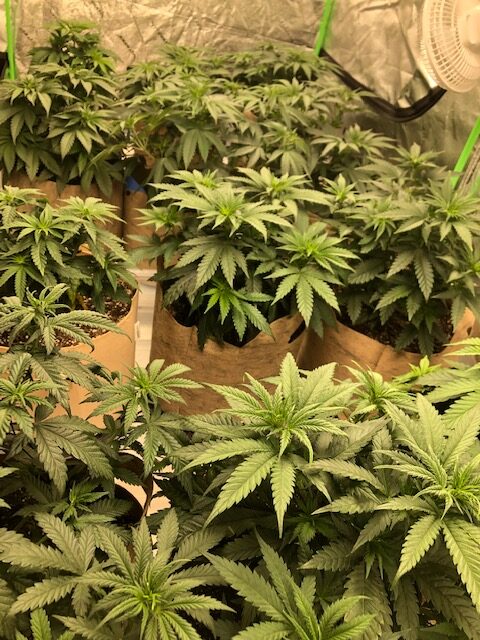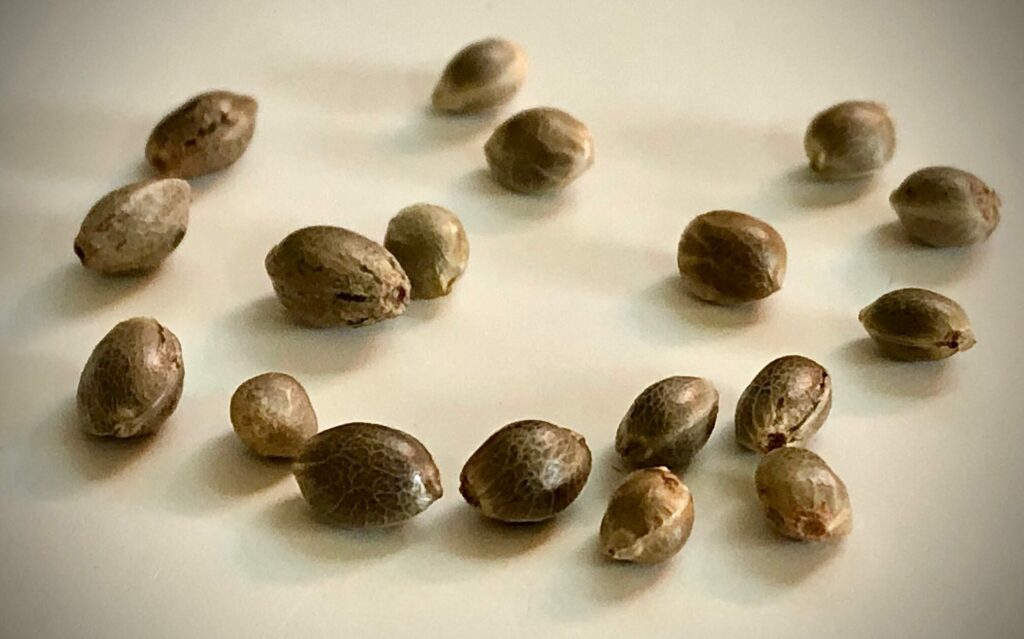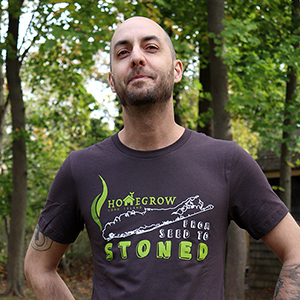When it comes to growing cannabis, and probably every other topic in the realm of existence, there’s no shortage of opinions on what the “right” approach is. This guide is not about trying to stand upon my mountain of righteousness and howling to the gods about the one true path to infinite yields and dank perfection. My goal here is to get first time growers up, running, and learning as soon as possible by attempting to remove some of the intimidation that can come with starting a new endeavor, especially one with so many different avenues of knowledge to explore.
The Homegrow LI Grow Guide is a series of articles in which I’ll attempt to guide new growers through the entire process from seed to cured product. There are a lot of different paths you could take to a successful harvest. This series will detail the way I’ve been able to successfully raise and enjoy my own cannabis for years.
And to make things as simple as possible, in this guide we’ll be taking a fully organic soil based approach, which also happens to be my preferred way of growing as it produces, in my humble opinion, the highest quality, cleanest, best tasting end product. But, just to be clear, I’ve got nothing but love for all of my synthetic nutrient using brothers and sisters and I in no way mean to look down on salt-based growers. If you’re growing your own cannabis, then you should be applauded no matter your approach.
Gathering Materials
To get prepared for a successful first run you’ll need a bunch of essential items and a host of other things that will make your life easier and your harvest greater. I’ll break each of these down in subsequent articles of the Homegrow LI Grow Guide but here’s a quick overview of what you’ll need:
- Seeds or clones
- Soil and containers
- A grow tent, or small room, to create a micro-environment
- A sufficiently powered grow light (or the sun! I’ll be focusing on indoor cultivation here though)
- A carbon filter
- An in-line fan
- Clip-on oscillating fans
- Ducting to connect your filter and fan
- Organic dry amendments and optional additives

Seeds
If you haven’t grown cannabis before, chances are you’ll be starting from seed unless you have access to a grower or dispensary that sells clones, I personally feel like starting from seed is a better way to get connected with the plant as you’ll become experienced in germinating seeds and raising seedlings. Once you’ve gotten your feet wet with growing from seed, cloning your own plants is a whole other experience to dive into that can be very rewarding as well. I’ll go into what cloning entails later in another article.
Where to get cannabis seeds?
While cannabis is technically still illegal at the federal level, there are many reputable online retailers selling high quality cannabis seeds that ship to just about every state. And while that too is technically still illegal, many people routinely buy seeds online with no issues. Many websites sell cannabis seeds as “novelty seeds” that aren’t meant to be germinated. Take that for what it’s worth, I guess.
Here are a handful of retailers with good track records and good quality genetics:
- Northatlanticseed.com/ – Based in Maine, these guys carry a TON of highly sought after strains from reputable breeders.
- Lbseedco.com/ – California based seedbank. Great shipping times and customer service.
- Seedsman.com/en/ – Based out of Barcelona, Spain. They ship to the U.S discreetly
- Nirvanashop.com/ – Based out of the Netherlands. Reliable, discreet shipping.
Regular, Feminized, or Auto-Flower seeds?
Most seed banks will sell regular, feminized, and auto-flowering strains, but there are exceptions that specialize in one over the others. Regular cannabis seeds are seeds that can result in either a male plant or a female plant. When growing cannabis for flowers and not seeds, you’ll want to have only female plants as male plants will pollinate your crop and you’ll wind up with seeds in your buds and low cannabinoid content. So, while regular seeds are cheaper than feminized, you’d have to learn how to sex your plants. Sexing plants entails either observing the plants until they are old enough to start showing preflowers, or taking clones to force into flower and then determining whether your plants are male or female. This step adds a layer of complexity to the growing process but if you are interested in learning how to sex plants yourself, I’ll be writing an article about that in the future. Many veteran growers will ONLY use regular seeds as they are generally believed to be more stable than feminized seeds but plenty of growers swear by the feminized varieties as well.

Feminized seeds are a bit more expensive but take the guesswork out of determining whether your plants are male or female. For ease of use, I generally recommend that first time growers start with feminized seeds so they can focus all of their attention on raising healthy plants instead of worrying about determining the sex of their plants and wasting precious grow tent space and soil with potential males.
Auto-flower seeds are from strains that have been bred with a subspecies of cannabis called ruderalis that causes them to enter the flowering phase based on maturity rather than photoperiod. What this means is that auto-flower cannabis plants don’t rely on the amount of light they receive per day to tell them when to start flowering like photoperiod plants do. Plants from regular and feminized seeds will start flowering when they receive 12 hours of light and 12 hours of darkness every day. Indoors, we initiate flowering in photoperiod cannabis plants by adjusting the amount of light our plants receive via timers and grow lights. But auto-flower cannabis plants will begin flowering no matter how much light they receive.
Many people will suggest that auto-flowers are the easiest way for new growers to start growing because you don’t have to worry about changing the amount of light they receive to begin flowering, but I tend to disagree with that idea. Yes, auto-flowers can be easy to grow if you have some experience raising healthy plants. But if you make any mistakes like overwatering, underwatering, or causing any kind of stress to your plants, you won’t have the flexibility of buying yourself more time to correct your mistakes before initiating flowering and your yield will suffer. With photoperiod varieties, you can simply wait until your plants have recovered to initiate flowering. For this reason, as well as not having to identify sex of your plants, I’d recommend that you start with feminized seeds for your first attempt.

Soil
What soil to use?
A good organic cannabis soil will have plenty of aeration, good drainage and moisture holding ability, and enough amendments (fertilizers/nutrients) to carry the plant through a decent chunk of its vegetative cycle. There are a number of really good, pre-made soil mixes that you can buy in many reputable garden stores and soil is one thing that I definitely recommend buying locally instead of online but, like anything, you CAN buy it online if you have to.
Fox Farms Ocean Forest is a great soil that is pretty readily available and is a favorite among cannabis growers across the entire country. It is a mixture of sphagnum peat moss, earthworm castings, forest humus, bat guano, fish and crab meal, sandy loam, and perlite for drainage. Ocean Forest generally has enough nutrients in it to last about a month without having to add any additional amendments so it’s definitely a good soil to get beginners going.
Coast of Maine Stonington Blend is considered a “super soil” that is loaded with enough amendments to be a water only soil but it is pretty expensive compared to other pre-made soil mixes. I think it’s a great soil but even this stuff will require some additional feeding as your plants mature unless you have a big enough space to keep your plants in 15 gallon pots. We use 5 and 10 gallon pots in our space and top dress this soil later in the vegetative cycle to give the plants more nutrition heading into the flowering phase.
There are many other soils you could use and we’ll be writing an article in the future on creating your own soil mix from scratch as well as creating an organic super soil using one of these pre-amended mixes with additional dry amendments added to it. But for now, I’d recommend just getting some Ocean Forest for ease of access. I’ve had lots of success with it and you won’t be disappointed.
Containers
Which pots to use?
We use fabric pots, or grow bags, in our tents as opposed to hard-sided plastic pots. You can get by using plastic pots but I’d definitely recommend using the fabric ones for a number of reasons. Fabric pots allow for better moisture control, aeration, and drainage. While many beginners suffer from the tendency to over water their plants, fabric pots lend growers more leeway by letting more air into the soil to dry it out faster.
Fabric pots also allow what’s known as “air pruning” of roots. What this means is that as roots grow towards the outside of the pots and attempt to grow through the fabric they’ll be pruned back by the air outside of the pot. This is desirable because normally, in a plastic pot, these roots will find the outer edge of the pot and then continue to grow in a circular pattern around the pot causing the plants to become rootbound. Rootbound plants suffer from stunted growth and if your plants become rootbound during the flowering phase your yield will be affected.
I’d also recommend buying the Smart Pot brand of fabric pots as they are higher quality than many of the cheaper brands and will last you through many grow cycles for years to come. The cheaper brands may seem enticing but they fall apart and you’ll be wishing you just spent a little more upfront.
In Part II of the Homegrow LI Grow Guide we look at grow tents, grow lights, carbon filters, and ventilation fans. For the sake of simplicity and not wanting to overwhelm anybody, we’ll be breaking everything down to what we recommend rather than comparing and contrasting every possible brand and variation. The possibilities are endless and all of our recommendations will encompass getting the best quality products at the most affordable cost without sacrificing efficiency.
Click here Homegrow LI Grow Guide: Part II – Grow Tents, Lights, Fans, and Carbons Filters to read Part II on the equipment you’ll need for your high-efficiency indoor cannabis growing set-up.
And if you haven’t already, you are welcome to join Homegrow Long Island Grower’s Circle, our private online community of at-home cannabis cultivators growing and learning together.

If you have any questions about the information contained here, please feel free to leave a comment below for our community to learn from or contact us directly via email.
Use the buttons below to share this blog on social media with your friends and family.
Disclosure: Some of the links on this site are affiliate links, such as Amazon links. I may make a small commission from purchases made through some of those links, at no extra cost to you. I only link to products that I would personally use and that I believe are of the highest quality. Any purchases made through affiliate links enable me to continue creating content for this website and are greatly appreciated!



